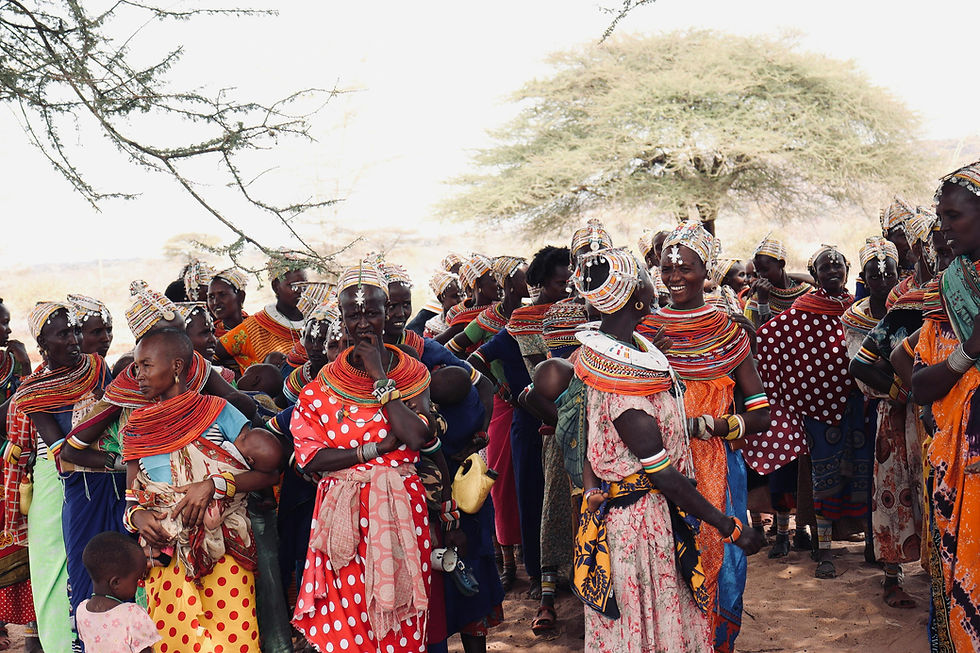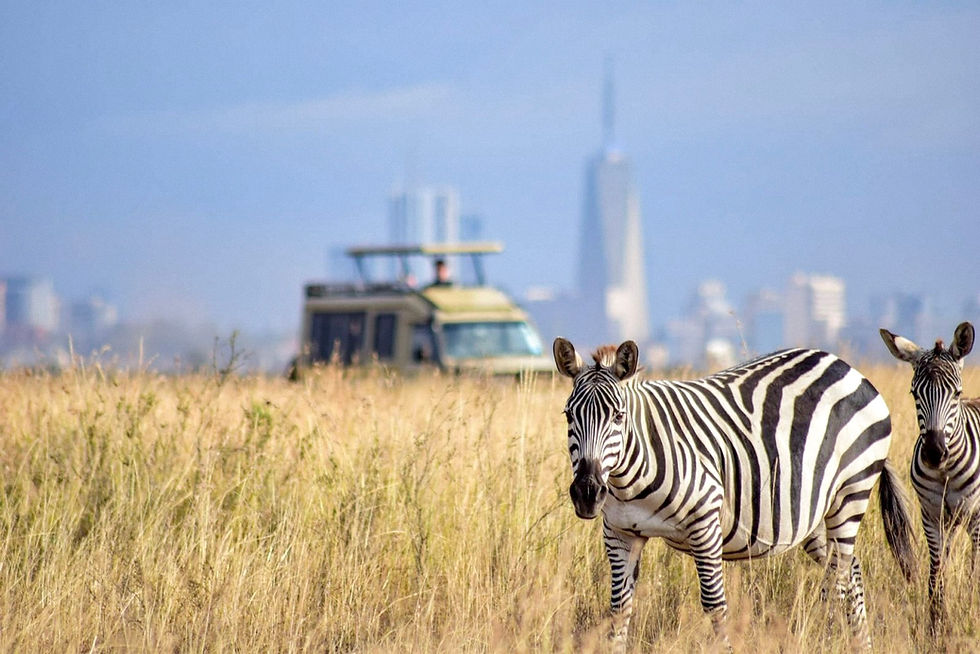WHEN THE RAINS REFUSE TO COME: A GLIMPSE INTO SAMBURU RESILIENCE
- Samantha

- Jun 2
- 2 min read
Updated: Jun 19

It begins quietly. The rivers shrink back into the earth and dust lingers longer in the air.
Livestock tread the same worn paths to dry riverbeds, sniffing at stones where water once
flowed. And somewhere, not far from the silence, a collective of Samburu women, known as
Ntorosi begin to prepare.
In northern Kenya, drought is not just a shift in weather. It is a test of endurance and at times
can be slow and unrelenting. But for the Samburu, whose lives are intimately woven with the
rhythms of the land, it is also a call to return to something deeper: a sacred dialogue with the
divine, Nkai.
When the rains delay and the herds begin to thin, the community turns to ceremony.
Specifically, to the calling of the rain.

At the heart of this tradition is Mount Ololokwe, a flat-topped mountain that rises abruptly
from the surrounding plains. To outsiders, it is a striking landmark. To the Samburu, it is
sacred ground. Ololokwe is where the spiritual and physical worlds meet. The women spend
hours ascending Ololokwe in the unrelenting heat, bearing gourds of milk as offerings and
singing songs of prayer.
They go not as individuals, but as a collective. Adorned in layered beads and bright shukas (a
piece of clothing that is wrapped around the body and commonly associated with the Maasai
and Samburu people), they ascend in faith. Their chants echo along the trails, calling out to
Nkai, the life-giver and the rain-bringer. On the mountaintop, they spill milk onto the earth in
offering. White rivulets form against the rock, symbolic of the rain they seek.
There is no set ritual or rigid formula. The ceremony is fluid, shaped by the urgency of the
drought and the instincts of those leading it. What unites it all is intent and a deep belief that
the land listens, when spoken to with reverence.
What might seem mystical to some, is for the Samburu, profoundly grounded. This is not a
show and it is not choreographed for onlookers. It is survival woven with spirituality. The
calling of rain is a reminder of the power of community, tradition, and the sacred right to ask
the earth for mercy.
Mount Ololokwe stands witness to it all.

Even in today’s shifting world, where tarmac roads now stretch past ancient migratory paths,
and mobile signals reach into the depths of the Kenyan bush, the rain ceremony endures. It is
not about resisting change, but about carrying forward what still matters.
The rains do not always come immediately. But eventually, the sky softens. The wind
changes and when the first drops fall, they do not just quench the land, but affirm something
greater.
The songs were heard.
%20(1).png)



.png)